Jump to:
Growing fresh crops in small outdoor spaces can be challenging, but it’s still possible, especially if you move indoors and know what to plant. Our guide will show you the best crops to grow at home and how to care for them. Ready to transform your living space into a thriving garden?
If you have a dedicated planting area indoors, consider picking up a wooden planter to contain them together.
1. Radish
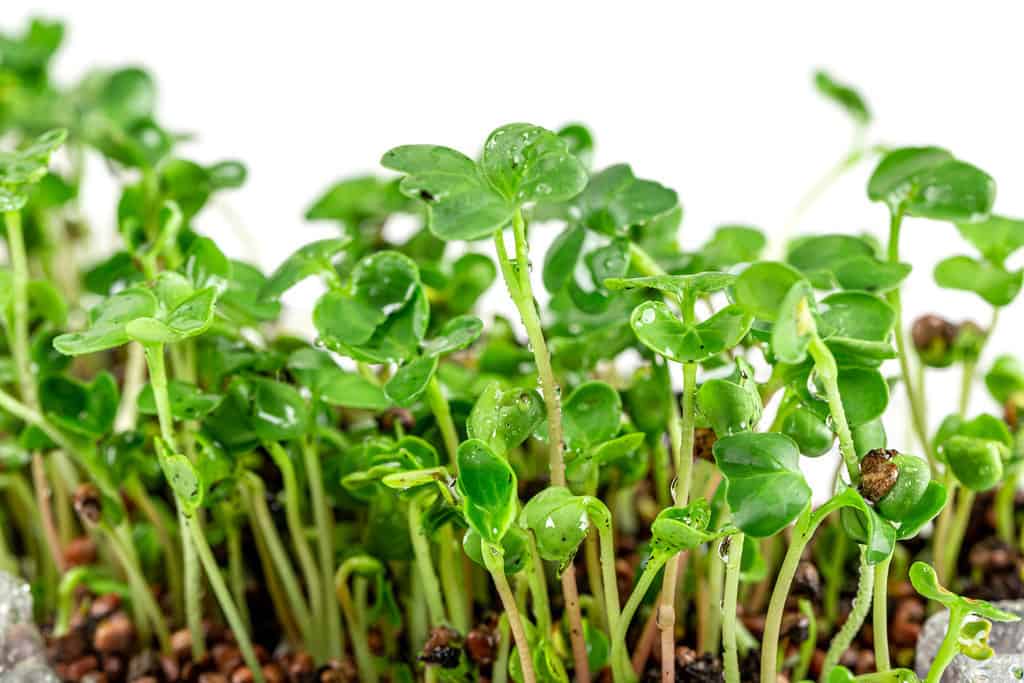
Radishes are quick-growing, vibrant root vegetables with a crisp texture and a peppery taste. They’re great for adding flavour to salads and snacks.
To grow radishes indoors, use well-draining soil to prevent waterlogging while keeping the soil moist. Water when the top inch of soil feels dry. Choose a container deep enough for the radish roots and place it in a spot with at least 6 hours of sunlight daily.
Harvest radishes when the roots are plump and mature, usually 3 to 4 weeks after planting, for the best crunch and flavour.
2. Herbs
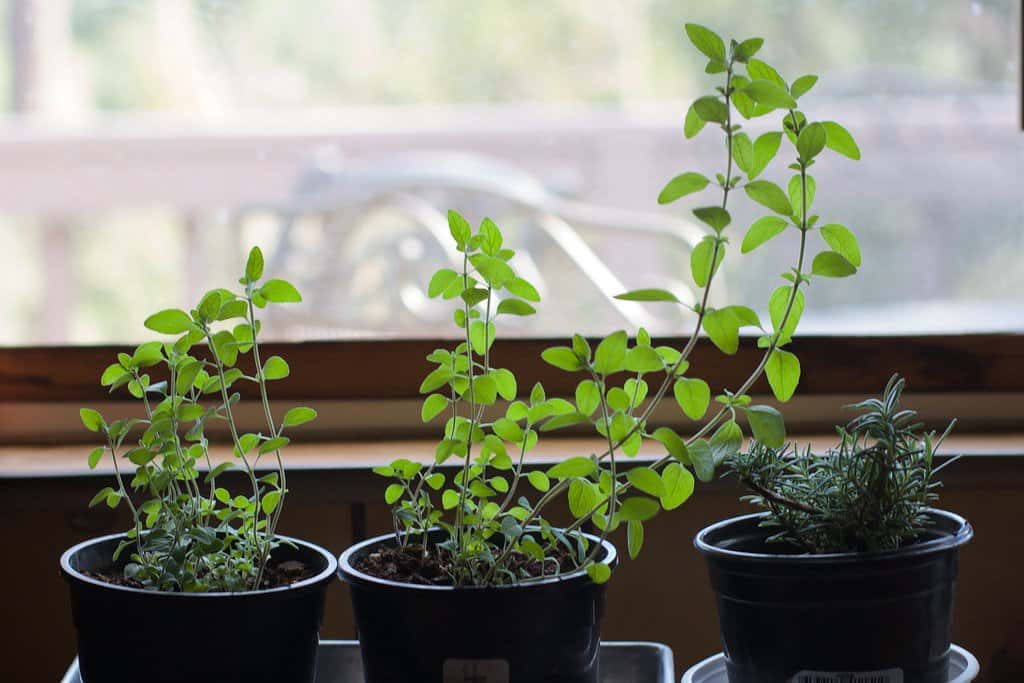
Herbs are a great choice for adding a variety of flavours and scents to your indoor garden. Try growing basil, mint, rosemary, and others in well-drained soil. Place them on your window sills to ensure they get plenty of sunlight. Pinch back the stems to encourage bushier growth.
Basil is ready to harvest in about 3 to 4 weeks, mint in 6 to 8 weeks, and rosemary takes around 8 to 12 weeks.
3. Potatoes
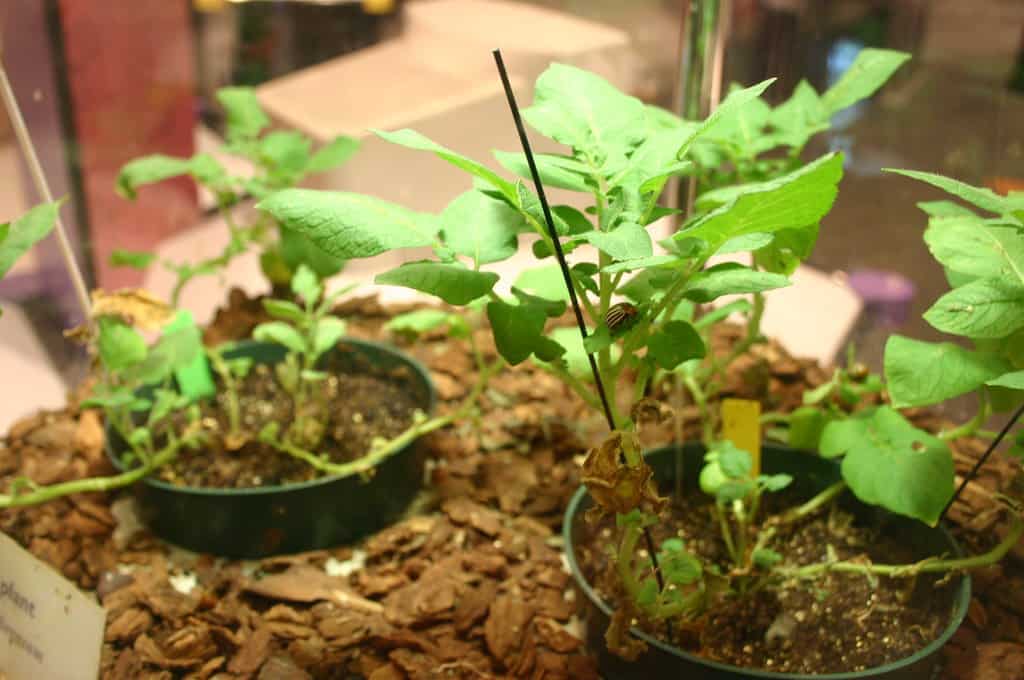
Potatoes are a great choice for growing indoors in containers. They provide a fresh, homegrown tuber that can be used in many dishes, from mashed to roasted.
To grow potatoes indoors, start with a large container and use well-draining soil. Plant sprouted potatoes with enough space between them. Keep the soil consistently moist but not too wet. Watch the plant’s leaves, and when they die back, it’s time to harvest. This means your potatoes are ready to enjoy!
4. Leafy greens
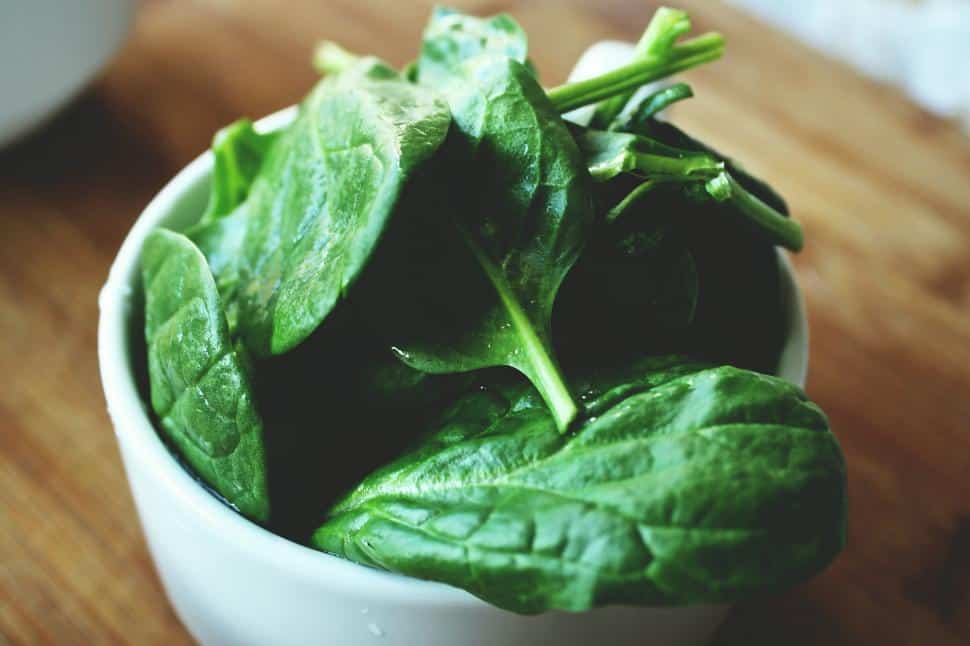
(Image Credit: Freerange Stock)
Spinach, kale, and lettuce are easy to grow indoors and provide a steady supply of nutrient-rich greens. Grow these leafy greens in a shallow container and nutrient-rich soil. Place the container in a well-lit area or under grow lights for 12-16 hours daily. Harvest the outer leaves regularly to let the inner leaves continue growing. This way, you’ll always have fresh greens for your salads and dishes.
5. Carrots
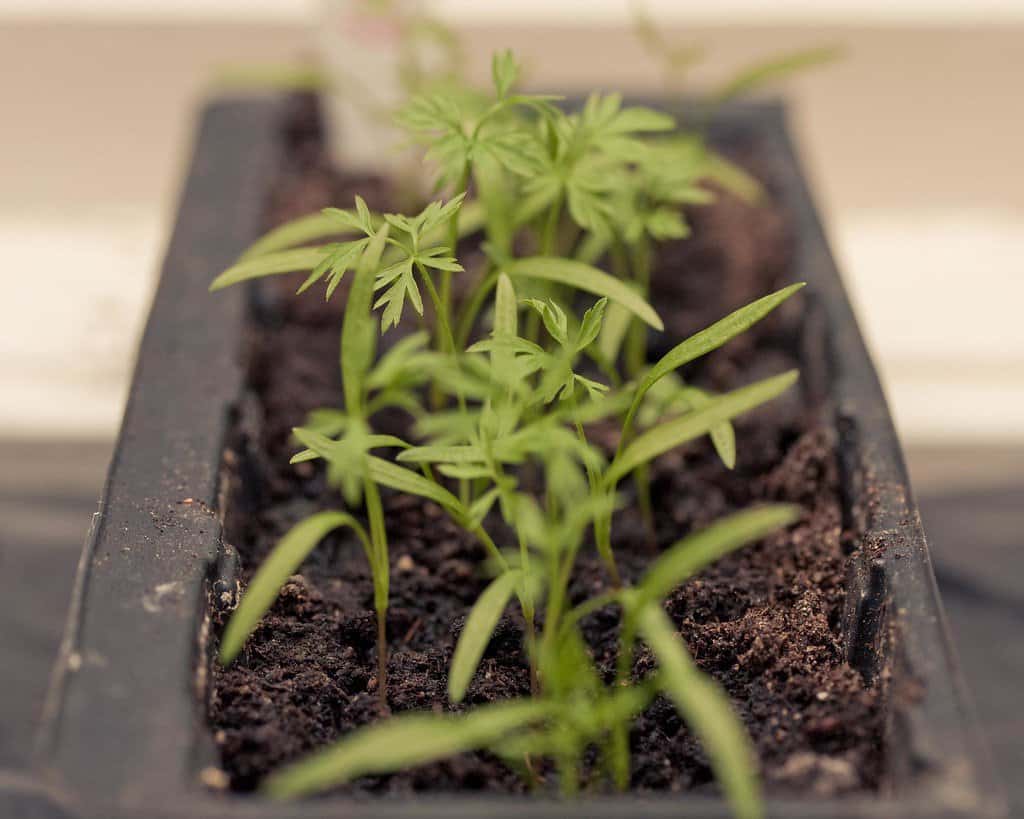
Carrots are sweet and crunchy, adding flavour and colour to your indoor garden. Use a deep container when growing them to allow the taproot to grow long and straight. Monitor the foliage — healthy, vibrant tops show thriving roots. Harvest carrots when they reach the desired size, and pull them from the soil for a fresh, homegrown addition to your meals.
6. Tomatoes
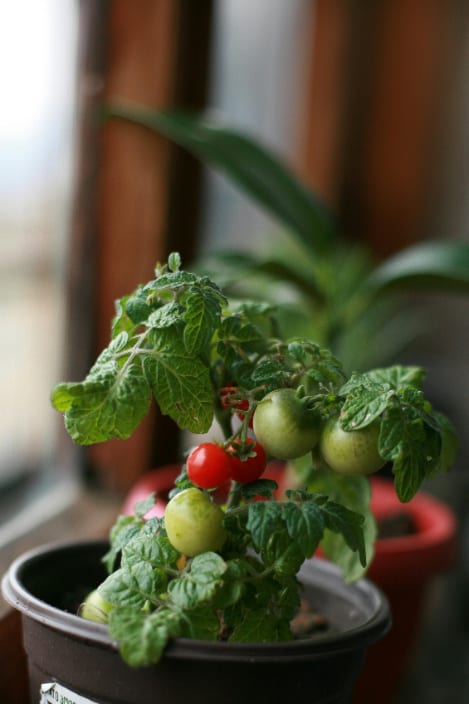
Tomatoes, beloved in the kitchen, offer a delightful option for indoor cultivation. For best results, opt for compact tomato varieties suitable for containers. Place your pots near a sunny window or use grow lights for 10-12 hours daily. Use stakes or cages to keep the plant upright and trim extra leaves to help it grow more fruit.
Feed the plants with a balanced fertiliser every 2-3 weeks. Expect a continuous harvest of juicy and flavourful fruits right at your fingertips!
7. Strawberries
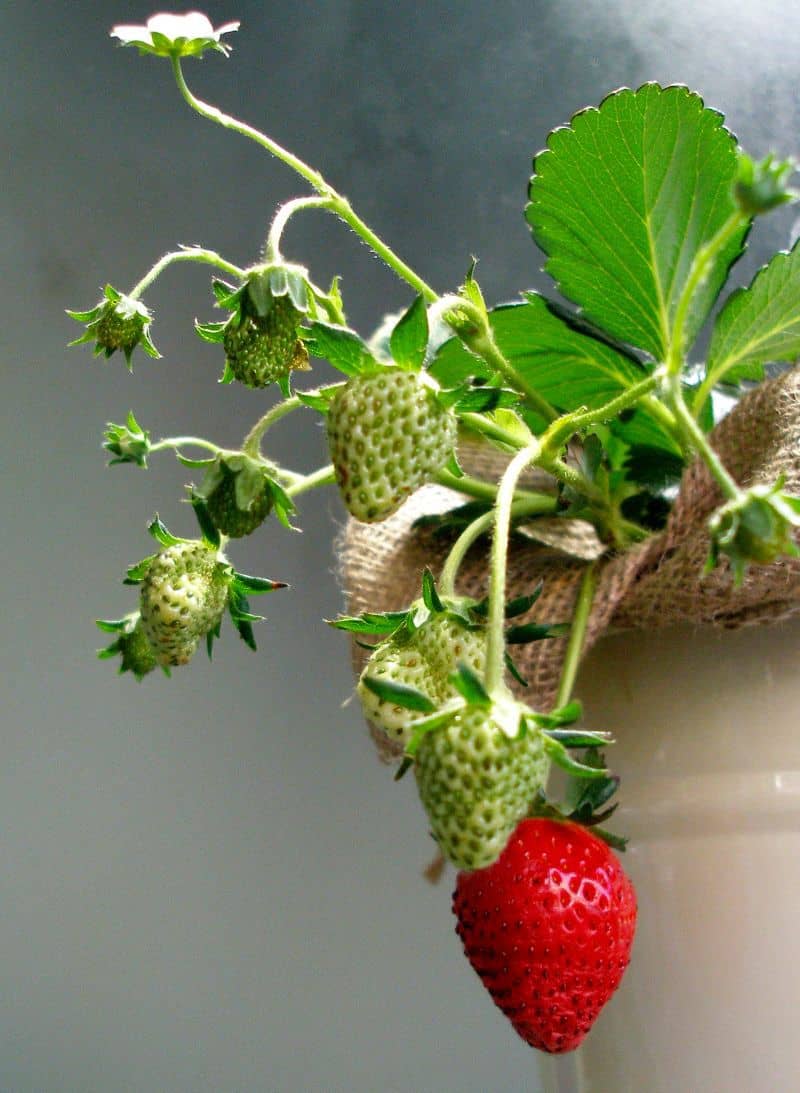
(Image Credit: Wikimedia Commons)
Grow strawberries indoors to enjoy fresh berries all year round! Use everbearing or day-neutral varieties in hanging baskets or containers. Feed the plants with a balanced fertiliser every 2-4 weeks and keep indoor temperatures between 65-75°F (18-24°C) for best results.
Pollinate the flowers by gently shaking the plant or using a small brush to boost fruit production. Expect to enjoy your sweet strawberries in about 6 to 8 weeks!
8. Peppers
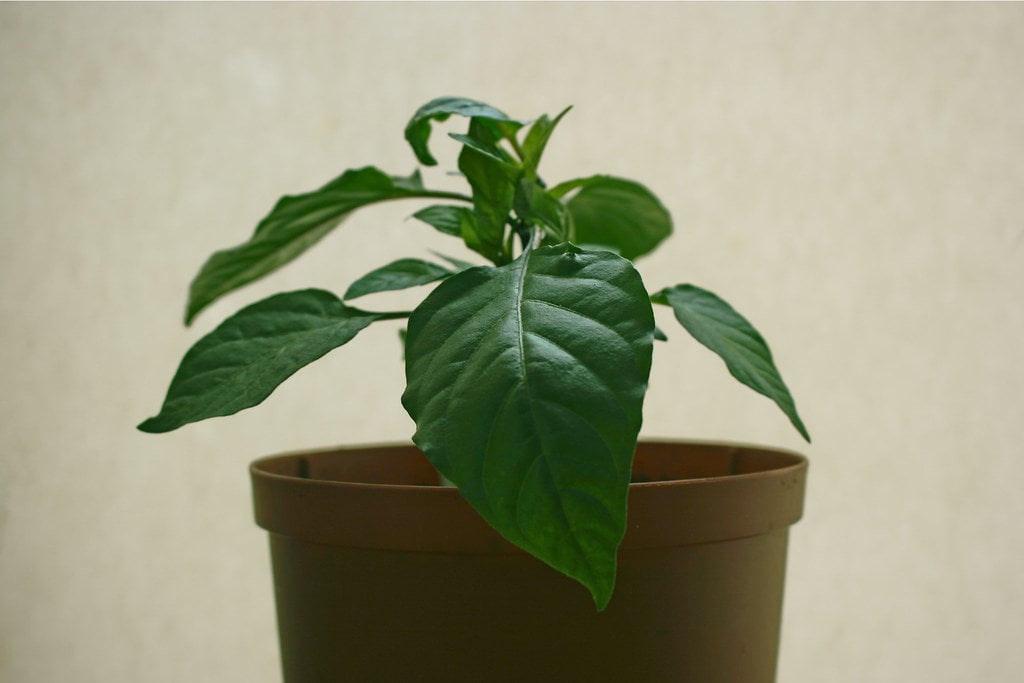
Peppers, whether sweet or hot, grow well indoors and add spice to your dishes. They need plenty of light, so place them in a sunny window or provide at least 8 hours daily. Use a high-quality potting mix for good drainage and nutrients. Support the plants with stakes or cages as they grow. Harvest peppers when they reach the desired size.
9. Mushrooms
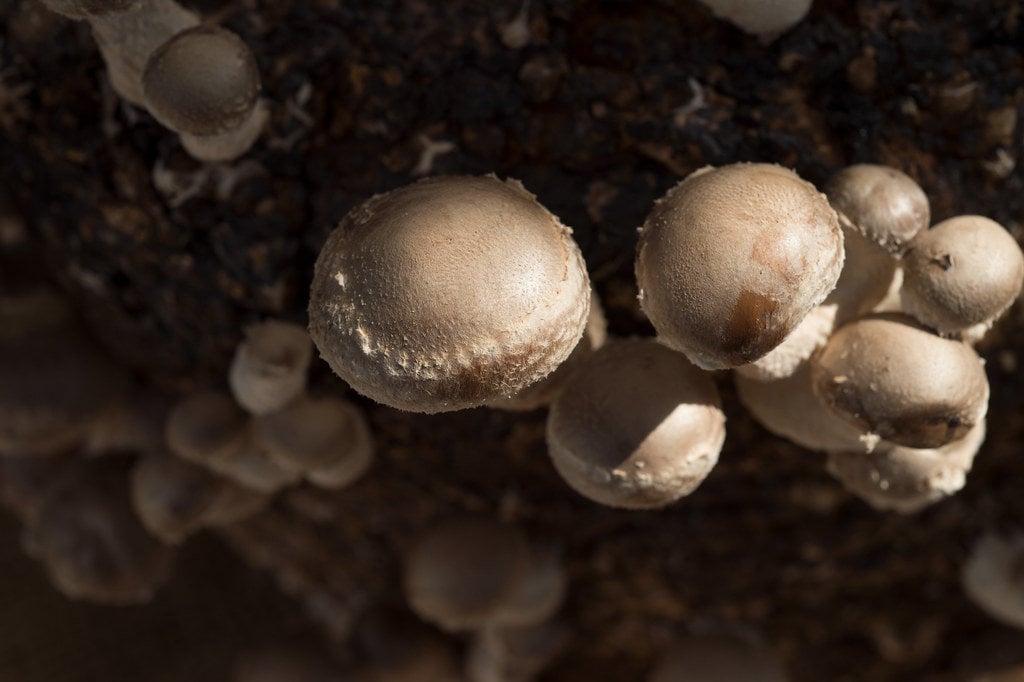
Varieties like oyster or shiitake can be grown at home for fresh mushrooms. Feel free to use a mushroom kit. Follow the specific guidelines for your mushroom variety, as different types have different needs. Harvest mushrooms when the caps fully open for the best flavour.
Avoid direct light, as mushrooms need darkness to grow. Monitor temperature and humidity regularly to stay within the optimal range.
Round-up
Start indoor gardening with these nine crops to enjoy fresh, homegrown produce anytime! If you have outdoor space, consider investing in a small greenhouse or potting shed to provide your plants with optimal growing conditions.
Up next on your reading list: House Plant Ideas For Year-Round Indoor Growing










